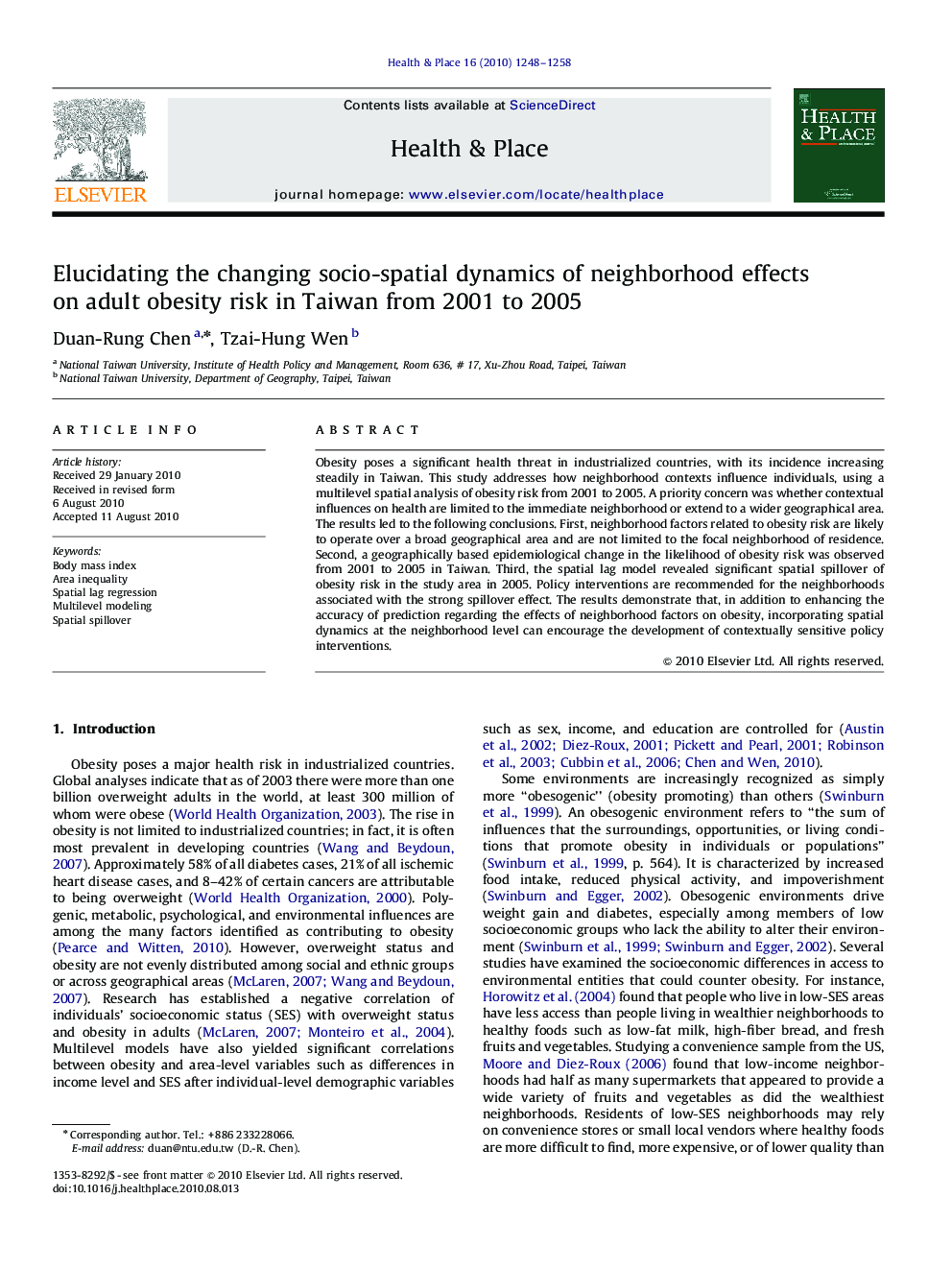| Article ID | Journal | Published Year | Pages | File Type |
|---|---|---|---|---|
| 1048612 | Health & Place | 2010 | 11 Pages |
Obesity poses a significant health threat in industrialized countries, with its incidence increasing steadily in Taiwan. This study addresses how neighborhood contexts influence individuals, using a multilevel spatial analysis of obesity risk from 2001 to 2005. A priority concern was whether contextual influences on health are limited to the immediate neighborhood or extend to a wider geographical area. The results led to the following conclusions. First, neighborhood factors related to obesity risk are likely to operate over a broad geographical area and are not limited to the focal neighborhood of residence. Second, a geographically based epidemiological change in the likelihood of obesity risk was observed from 2001 to 2005 in Taiwan. Third, the spatial lag model revealed significant spatial spillover of obesity risk in the study area in 2005. Policy interventions are recommended for the neighborhoods associated with the strong spillover effect. The results demonstrate that, in addition to enhancing the accuracy of prediction regarding the effects of neighborhood factors on obesity, incorporating spatial dynamics at the neighborhood level can encourage the development of contextually sensitive policy interventions.
